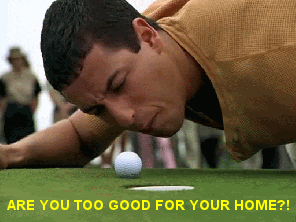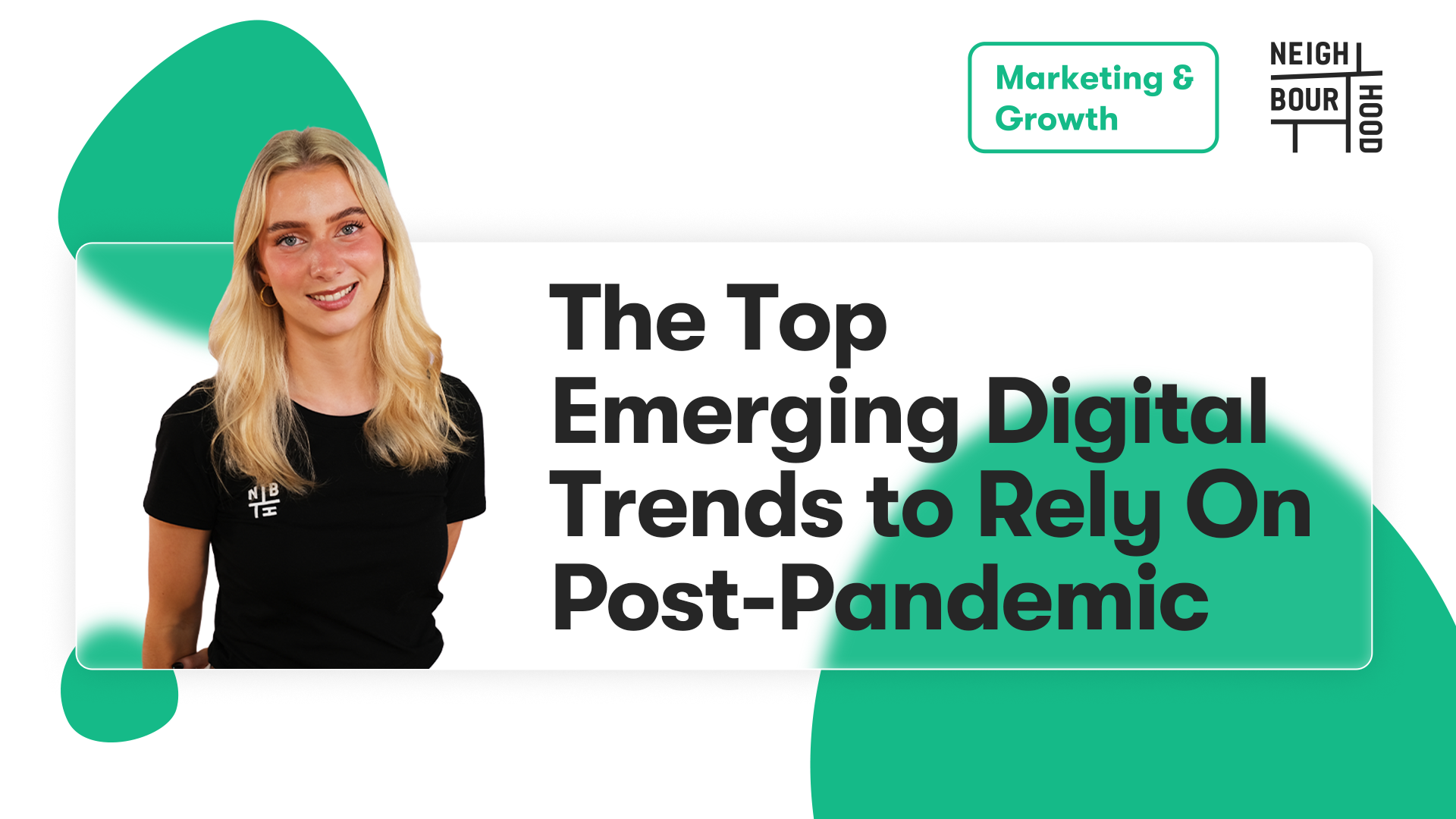As far as 'The Best Year Ever' Award goes, 2020 is surely a laughable entrant. While many thought it couldn't get much worse than 2016, with seemingly every one of our childhood stars dropping like flies, 2020 has been a ruthless 5-month re-run of [*insert your favourite sad movie here*] / Marley and Me.
But on the bright side, out of adversity comes great opportunity - and for the marketing world, the countless Zoom meetings and Slack conversations have recognised four core opportunities (as well as, of course, being able to work in your winter pj's). These are not only imperative for marketing in the current moment, but will become even more important as we move from crisis to recovery and beyond!
So let's dive into the top marketing strategies that've got the Bill Withers' of the Marketing world singin' "Lean on meeee, when you're not stronggg ..."
1. Embracing Raw and Less Polished Production
We're living in a new reality of production challenges - but it's becoming increasingly clear that consumers are chill with (and sometimes, even prefer) raw, unpolished content from brands. Companies and agencies have been super innovative with their content, exploring new, less glamorous creative tactics like animating on their phones and recycling old content.
While this isn't just a timely excuse to cut corners, one of the things COVID-19 has made clear, is that consumers prefer timeliness and relevance over production value. It's the video version of Pea and Ham soup (stick with me). Looks a bit pants, but gives you all the hearty nutrients you need to face the outside world. Boom.
Some examples that have been super popular among the 2020 stay-at-homer, have been John Krasinski’s online series Some Good News filmed from his home office, Googles' salute to health care workers, Visa and the NFL putting out ads using mobile and webcam footage. And leave it to Apple to make the point that, amid the challenges, “Creativity Goes On.” Word up. This may help explain why TikTok's raw, relevant and somewhat hap-hazard is thriving like there's no tomorrow, while Quibi's highly produced bite-sized content is struggling to get off the ground.
2. Recognising UGC as Your Greatest Ally and Opportunity
During times of uncertainty, people tend to look to the people, organisations and brands they trust the very most. Post-pandemic, brands will need to hustle harder to recapture and strengthen consumer trust to build long-term customer value and loyalty. The number one way to do that is through shared and authentic experiences - made easy, by showing them other happy customers!
Despite this, User Generated Content (UGC) has historically been the sticky tape of the marketers' toolkit - majorly underused! But with the recent pushback on influencer and celebrity-led messages coupled with COVID-19-related challenges, it's easy to see why UGC is having its moment in the sun. With more consumers craving real, relatable human stories, this trend will likely become the screwdriver of the marketers toolkit - totally essential!
Take Buffalo Wild Wings for example. With live sports on pause, the brand partnered with The Martin Agency to create a spot completely made up of people playing made-up sports in their homes.

Going beyond UGC in ads, home goods brand Kirkland’s turned to UGC platform Pixlee to help fill a content void while retail locations have been temporarily closed. When it comes to finding those UGC gems, Adrian Molina, senior brand manager of Aviation Gin, said, “the key is to listen, listen, listen.” It’s how his team came across the “quarantini” tweet that quickly went viral. “People are getting creative with your products, so find, embrace them and their content.”
3. Finding Levity and Optimism
As we entered into the 'new normal', empathy was the go-to tone in advertising - but since then, it's evident that a tonal shift has happened, with brands now zeroing in on humour and a more hopeful approach to break through the 'sea of sadness'.
While many may be reluctant, shying away from humour during uncertain times actually does more harm than good. Brands need to be leaning on levity to connect with people in a meaningful, non-offensive way within messaging. No one is asking to make a joke of the situation - your presence merely needs to fuel positivity. Why?
Well, think about it. Consumers are constantly inundated with funereal ads and messages that try and shame them into purchasing their product to ensure their organisation's future. Mood-dampener or what? All the product-driven marketing in the world is no match for a good ol' laugh that brings some levity to consumers' hectic schedules. They’ll remember a funny message the next time their purchasing cycle begins again.
However, before going full Russell Brand and getting your queue cards ready, make doubly sure the brand of humour syncs up with your brands' attributes. Try and run a Beta campaign by some media-savvy employees and see whether it resonates with them or falls flat. Don't just use the new interns because you know they'll nervously laugh at anything you say - get the cynics and questioners together and try and get some muffled chuckling happening. Determine where the campaign might backfire with the market, if at all!
'Liv' at the Apollo: Top Tips for a guaranteed giggle
When you're ready to allocate a budget for your campaign, ensure that you:
1. Make sure the audience shares in the humour
I don't think there's anything more uncomfortable than an attempt at humour met with tumbleweed. Maybe trying to make a joke about tumbleweed right after? Bring in your sales reps to get a sharper sense of what makes customers tick. Don’t get too far afield from your audience. Make sure the humour used doesn’t turn into a head-scratcher for customers. The audience needs to be in on the joke!
2. Don't be too edgy
I'll say it again, don't go too Russell Brand. In order to work effectively, the humour you use must harmonise with the audience and connect to your organisations' overall values. Keep it light!
3. Be just slightly self-deprecating
There's no need to slag yourself off or anything - but people are drawn to businesses who can laugh at themselves and still send a strong message. By taking a humorous approach, organisations demonstrate to consumers that they are good people to work with and are not all about the sale. That makes people feel good when they think about your organisation, which is the golden ticket of humour, guys!
4. Creating Genuine and Unique Digital Experiences
While the challenges of the pressure to put out work and the risks tied with being first are real, the brand bandwagon effect can shift the conversation. There's been a rise in virtual concerts and happy hours, as well as online tours and livestreams - I mean just open your Instagram and try to count how many brands and personalities go live on any given day! My personal fave has been Rupi Kaurs' Live Writing Workshop - I wrote a poem about my carpet, it was a great time.
The new reality is that consumers have a large list of digital experiences to tune into whenever they like, so why should they tune into yours? Instead of trying just to recreate in-person events or simply bringing physical activities into the online world, crafty brand marketers have been creating unique digital experiences that can stand on their own.
A few examples that have risen above the crowd include DJ nice creating the first Club Quarantine, and Fortnite following up its first in-game concert experience with Marshmello with a record-breaking show by Travis Scott.
Brands have also found a way to ease the consumer pain points of today, with TikTok, YouTube, Chase and Doritos all helping graduates who can’t attend their ceremonies, while Teen Vogue, Chipotle and Jack in the Box gave teens virtual proms. For those looking to relax, Yeti brought the goodness many of us are seeking by “livestreaming” from the world’s most calming streams - "How's the serenity, darl?"
So there are some things to keep in mind as we head into the next phase - project 'we got this!'. The first half of 2020 taught us more than we could've ever for-seen, but the power of hindsight means we can harness all we've endured and take what we can from being stuck at home, to come back bigger and better than ever, with new strategies - and a new mindset!



